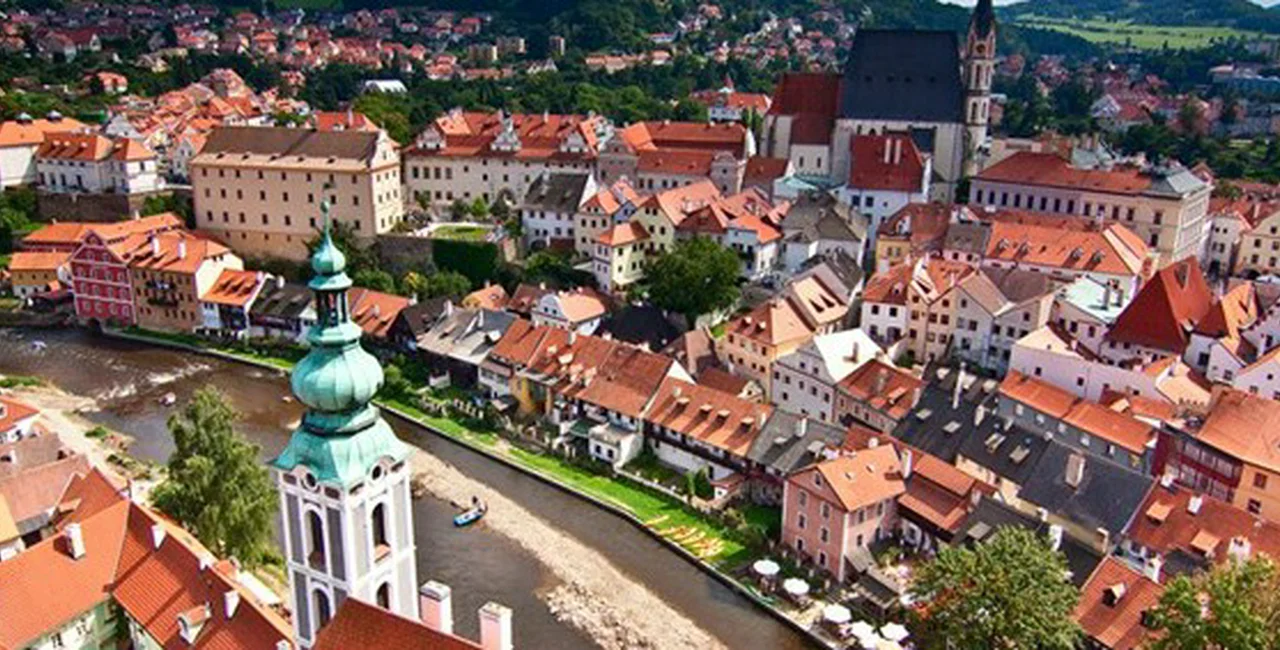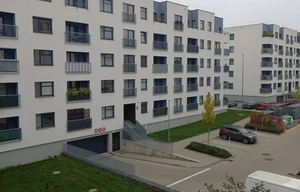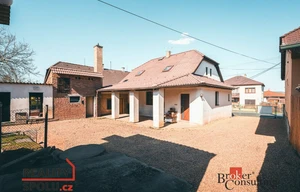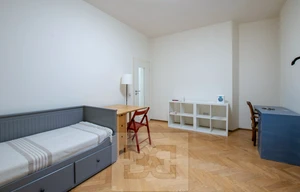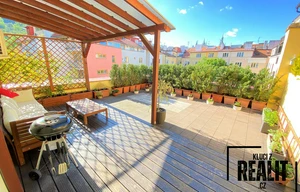There is nowhere in the world where you will find so many sights entered in the UNESCO World Heritage List as in the Czech Republic. Today you can find 12 sites, two intangible cultural heritage traditions and one geopark – all on World Heritage List. The sites are varied – from whole historical sections of towns to single buildings and if you were to travel to the Czech Republic only for them you certainly will not be bored. You will thus get to know the Czech Republic really well.
1. Český krumlov
This picturesque town lies in a deep, meandering valley of the Vltava river in the very South of Bohemia. Its golden age came about during the rule of the Lords of Rožmberk (Rosenberg), in 1302-1602, who made their residence there. At that time, Krumlov was a point of contact between the Czech interior, the Austrian/German Danube region, and Northern Italy. The Italian Renaissance greatly influenced the appearance of the town and its castle.
At the end of the 17th century, during the rule of the Eggenberg dynasty, a Baroque theater was built and the chateau garden remodeled. During the rule of the Schwarzenbergs, Krumlov received a decorative Baroque makeover. However, Český Krumlov equals more than an exceptional complex of 300 historical buildings. The town presents itself to visitors also as a hub of culture, conventions and tourism. The International Music Festival takes place annually in August, as does a festival of Renaissance music; theatrical productions are held in the castle garden, the Festival of the Five-Petalled Rose is a major summer attraction, and the Egon Schiele Center is open to visitors the year round.
Český Krumlov is situated some 180 km south of Prague, near the border with Austria. A network of long-distance bus lines connects it to major cities. In the summer, an express train from Prague (the Šumava) comes here daily. More information:www.ckrumlov.info
2. Holašovice
This South-Bohemian village from the 13th century is considered a true pearl of the rustic Baroque style. Its 22 farmhouses with painted Baroque gables in the front and gardens in the rear are situated around a central pond. The pond was used for breeding freshwater fish; the entire area is still known for its fish industry. The village is a living monument to the rustic traditions, such as those we know from the Bartered Bride, perhaps the most famous Czech opera. (The village even served as a set for the its film version.)
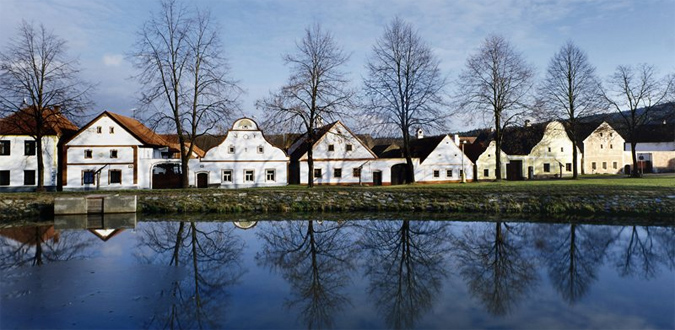
Holašovice is situated 14.5 km west of České Budějovice.
3. Kroměříž
In 1777, this town, located in Central Moravia at the foot of the Chřiby hills, became the seat of the bishops of Olomouc. The splendid Kroměříž chateau and its beautiful gardens are considered an especially attractive and well-preserved example of Baroque palatial and garden design. They played an important role in the development of Central European Baroque architecture of gardens and palaces.
The castle gallery houses a major collection of European art, featuring an especially stirring oil painting by Titian, “Apollo’s Slaying of Marsyas”.
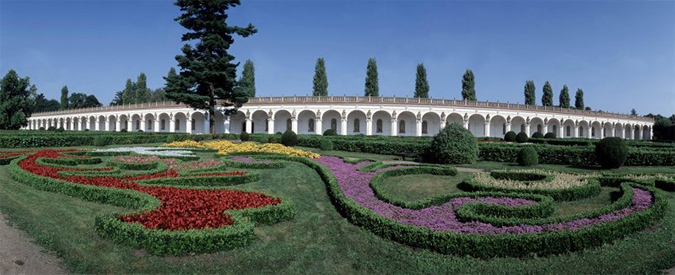
The chateau itself, its Flower Garden and the Garden Below the Chateau were entered in the UNESCO list of world cultural heritage sites. Kroměříž is located some 50 km from Brno, near the Brno – Olomouc highway, and is also well-connected through the regional rail network.
4. Kutná hora
During the Middle Ages, profits from the Kutná Hora silver mines brought fame to the lands of the Czech Crown, and Kutná Hora became the richest and most powerful town in the Czech lands. At the turn of the 14th and 15th centuries, Kutná Hora became the seat of King Václav IV.
The Gothic St. James’ Church (1330) and the St. Barbara’s Cathedral (1388), devoted to the patroness of miners, are among the most important architectural monuments. Among other jewels is the former mint – The Vlašský dvůr (Italian Court) from the 13th century, and several patrician houses. The building called Hrádek (Little Castle), which is part of the former municipal fortifications, houses a museum of mining; the tour includes a visit to a former mediaeval mine.
Other worthwhile monuments are the former Latin school and the cloister church in a suburb called Sedlec, which houses a curious ossuary. Its interior is composed exclusively of human bones, dating mostly from the Thirty Years’ War.
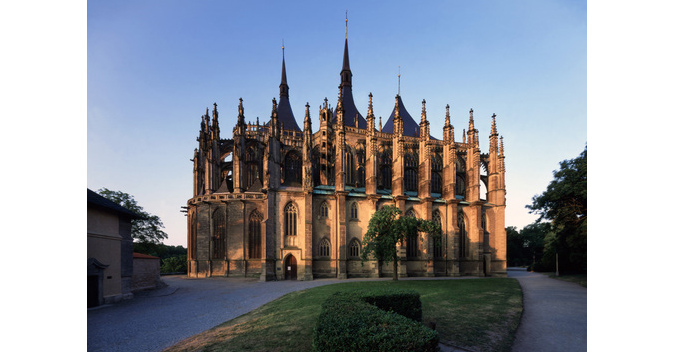
Cultural events: Musical programs, the Silver Mining Festival, the St. Wenceslas Winemaking Festival. Kutná Hora is situated 60 km east of Prague. A quick connection to Prague is ensured by a number of domestic express trains and regional bus lines.
5. The Lednice-Valtice area
An extensive Baroque complex built for the Liechtenstein family by renowned architects like C.Tencalla, D.Martinelli, J.B.Fischer von Erlach, and J.Ospel. The area is spread between the little towns of Lednice and Valtice southeast of Brno, and covers 250 square kilometers.
The complex consists of various chateau buildings, garden structures and decorative sculpture of various styles, set amidst ponds and woods. The Valtice chateau is surrounded by a beautiful natural park dotted with many Romantic structures (“follies”), rare trees and greenhouses with tropical plants.
The area is crisscrossed with a dense network of hiking and biking trails and is perfect for exploring in combination with the surrounding wine country.
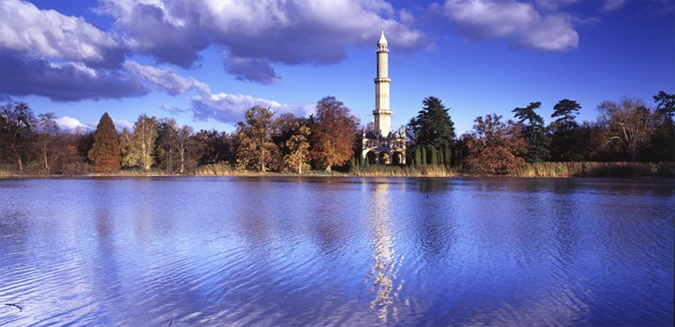
The chateau area is located near the Austrian borders and is accessible from the Prague – Brno – Bratislava (- Vienna) via an access route from Brno. Good rail connection several times daily via trains to Břeclav and Znojmo.
6. Litomyšl
In the small town of Litomyšl, the aristocratic family of Pernštejn had a mediaeval castle remodeled into a Renaissance chateau the second half of the 16th century. The chateau is an exceptional example of an original Italian arcaded structure which was adapted for the Czech environment. It is a fine illustration of an aristocratic residence built during mediaeval Renaissance, with later developments under the influence of new styles. The town of Litomyšl is also the birthplace of the great Czech composer Bedřich Smetana; an annual music festival (Smetana’s Litomyšl) bears his name.
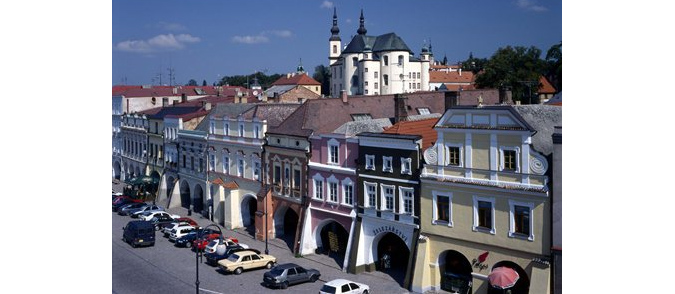
The town and chateau are located some 50 km southeast of Hradec Králové on the main road to Svitavy and Brno.
7. Prague
The capital’s historical center, more than ten centuries old, enchants its residents and visitors alike through its unique symbiosis of many architectural styles – from Romanesque rotundas, Gothic towers, and Renaissance burghers’ houses and palaces to the Jewish synagogues, Baroque churches, convents and monasteries. The city is full of crooked lanes, gold-tipped towers and church cupolas, standing side by side with more recent Art Nouveau and Modernist architecture…
A poet once described Prague as a “symphony in stone”, and thus perfectly expressed its character and unique beauty. This city of a hundred spires, built along the meanders of the Vltava and on the surrounding seven hills, has always enraptured poets, artists, and photographers. The architectural jewels in Prague’s historical center are more than just stone-and-mortar witnesses to the past. Prague always has been, and continues to be, a living city with an unusual number of theaters, concert halls, galleries, museums and exhibition spaces; its cultural offerings are rich and varied. Prague is as multifaceted a city as one could wish for; to each visitor it reveals a different, yet always charming, face.
8. The Holy Trinity Column in Olomouc
The Baroque column came into existence between 1716 and 1754 and is a testament to the onetime religious fervor of this bishopric town. The column unites the motif of ecclesiastic triumphalism and faith with its architectural and artistic expression. Thanks to the entry of this Baroque column on the prestigious UNESCO list, the historic Moravian town of Olomouc has also received wide recognition. Olomouc used to be Moravia’s capital, a seat of bishops since 1063, and it is the second largest municipal monuments reservation after Prague. The most important religious structure in the city is the St. Wenceslas’ Cathedral from 1109, remodeled between 1883-1890 in the neo-Gothic style. In 1306, the last king of the Přemyslid dynasty, Wenceslas III, was murdered here. Other important structures are the Přemyslid Palace, Hradisko – the largest Premonstratensian monastery in all of Europe, and the fortified Church of St. Maurice with its renoiwned organ; the church dates to the 15th-16th century. A small chapel in the St. Wenceslas’ Square houses a Madonna dating from 1483, one of the most valuable Gothic sculptures in the Czech Republic.
Olomouc is situated directly on the high-speed road (Brno) – Vyškov – Ostrava, some 300 km from Prague, as well as on the high-speed train route Praha – Ostrava.
9. Telč
Originally a royal water keep founded in the 13th century on the crossroads of several busy trade routes. It obtained its current appearance in the 16th century, when the chateau as well as the town center were rebuilt. This development was in part the work of the Jesuit order, which then had a significant presence in the town. Beside the chateau and its park, among the most important monuments is the square – a unique complex of Renaissance and Baroque houses. The houses’ arcades and gables were built according to a integrated plan. Music and visual arts play an important role in Telč’s contemporary life. Cultural events: International folklore festival; French-Czech music academy.
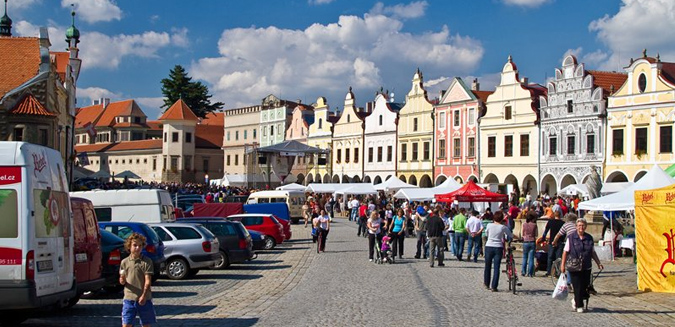
Telč is best reached from the Praha – Brno – Vienna highway. Other connections include the regional bus and rail network.
10. Třebíč – Basilica of St. Procope and Jewish Town
Třebíč is the town of uncommon religious sights, the most famous of which is the Romanesque-Gothic Basilica of St. Procope, architect Kamil Hilbert created the recent look of the basilica interior in the years 1924-1935.
Třebíč used to belong to the important centres of Jewish culture in Moravia. The uniquely preserved Jewish Town remains a witness of the coexistence of the Jews and the Christians. The unique Jewish quarter with dense housing, narrow isles, dark corners, vaulted passages and romantic little squares, includes more than 120 residential houses. Besides them there have been preserved the buildings of the former Jewish institutions – e.g. the Town Hall, the school, the rabbinate and the poorhouse. The original Jewish cemetery was relocated in the 17th century to the northern slope of the Hrádek Hill. Around 3000 tombstones, the eldest of which dates back to 1625, are situated in a beautiful park with tall trees and mysterious atmosphere. The cemetery includes the Ceremonial Hall from 1903 with uniquely preserved interiors. Funeral ceremonies have been taking place here still according to the old Jewish tradition. Today, the cemetery belongs to the best-preserved Jewish cemeteries in the Czech Republic. Besides Jerusalem the Třebíč Jewish sights are the only ones, which have been included in the UNESCO list as separate.
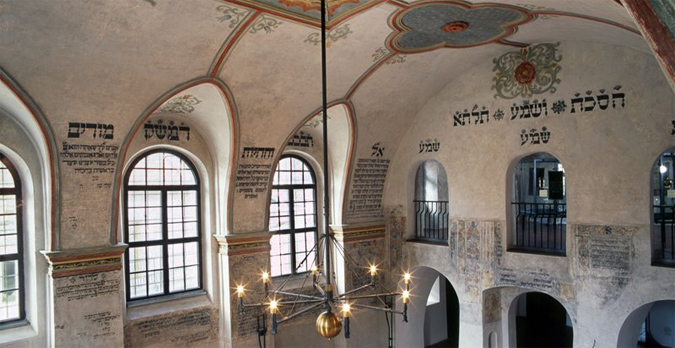
Třebíč is situated between the towns Brno, Jihlava and Znojmo. It is 180 km far from Prague and only 60 km from Brno.
The Tugendhat Villa, built between 1929 – 1930, is a gem of Brno’s architectural modernism and world’s functionalism. It is the most prominent building designed by the architect Ludwig Mies van der Rohe in Europe. Its importance was recognised in 2001 by its inclusion in the UNESCO’s World Heritage Cultural List. The family villa of the Tugendhats is mainly famous for its original space design, unique technological equipment and elegant interiors with precisely defined function for every single piece of its furniture.
The Villa is currently undergoing an overall reconstruction and it is not open to the public. Up-to-date information on the current state can be found at www.tugendhat.eu.
12. The Pilgrimage Church of St. John of Nepomuk at Zelená Hora (Žďár nad Sázavou)
The abbot of the Žďár monastery had this pilgrimage church built to celebrate the memory of the Czech martyr and saint, John of Nepomuk. It is a unique testament to the genius of the Prague architect Giovanni Blasius Santini, who decided to use the five-pointed star as the principal symbol in his remarkable structure.
According to legend, a crown with five stars appeared above the body of the drowned martyr. The building in the so-called Baroque Gothic style is characteristic by its composition based on the five-pointed star shape: a star-shaped ground plan with five exits, five stars and five angels on the main altar. The main altar depicts the martyr being carried by angels to heaven. The side altars are devoted to the four Evangelists. All the figures find themselves amidst a vortex of flames, and their expressions are deeply stirred. The apex of the cupola contains a giant tongue, the symbol od St. John of Nepomuk, surrounded by a fiery circle.
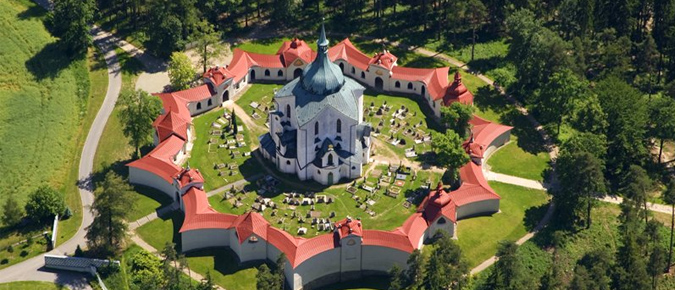
This work of Giovanni Santini speaks to us through the originality of its concept and its brilliant technique, which contains elements of both the Baroque and the Gothic, united here in the splendid Bohemian Gothic Baroque.
Žďár nad Sázavou is located some 120 km from Prague, near the Prague-Brno highway.
Related articles
- 10 Travel Articles That’ll Get You Excited for Autumn In the Czech Republic
- VIDEO: Amazing Recreation of 14th-Century Construction of Charles Bridge
- Prague Is the Cheapest City In Europe for Ballet, Opera, Art
- Český Krumlov Mulls Over Charging Tourists a Toll
- New Travel Guide Puts Czech Monasteries On the Map












 Reading time: 10 minutes
Reading time: 10 minutes 